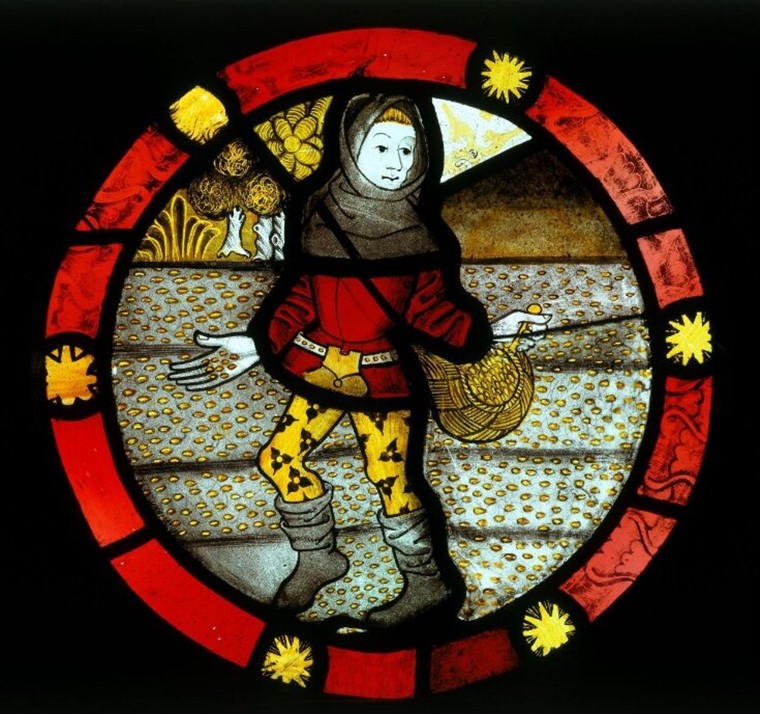
I’m not sure if you enjoy Japanese Haiku, those brief poems with 3 lines and 17 syllables. As I look at the ‘October’ Stained Glass Roundel at the Victoria and Albert Museum depicting a farmer sowing seeds, I reminisce about the ‘Haiku’ games I used to play with my students. And just like that, a new Haiku came to life… Red and yellow glow, / Seeds are sown in glass and light, / Medieval blooms…
Stained glass roundels offer a vivid glimpse into the daily lives and seasonal rhythms of medieval society, and the Victoria and Albert Museum holds a remarkable example in its collection. Among the treasures acquired by the museum in 1931 are three roundels, which once formed part of a larger set depicting the ‘Labours of the Months.’ Although the original location of these roundels remains a mystery, they are believed to have originated from the old parsonage at St Michael-at-Coslany in Norwich. One of the missing pieces, illustrating the month of January or February, now resides in the Burrell Collection in Glasgow, connecting these scattered remnants of medieval art across time and space.
The ‘Labours of the Months’ is a captivating iconographic theme in medieval art, reflecting the cyclical nature of rural life and the deep connection between humanity and the seasons. Each month was traditionally represented by a specific task or activity, from sowing seeds in October to harvesting in August, offering a visual calendar of rural labour. These depictions often appeared in illuminated manuscripts, sculptures, and stained glass, serving as both educational tools and spiritual reflections of the divine order of the world. In churches and cathedrals, the ‘Labours of the Months’ provided parishioners with a relatable visual narrative that connected the rhythms of the natural world with their spiritual lives.
The Stained Glass Roundel depicting ‘October’ in the Victoria and Albert Museum beautifully exemplifies the role of stained glass in medieval church decoration. With its vibrant colours and intricate design, this roundel transforms the agricultural task of sowing seeds into a luminous spectacle of divine light. Like many stained glass windows of the period, this piece is not just a work of art but a powerful symbol of spiritual illumination. The depiction of a farmer scattering seeds is rendered in brilliant hues that would have cast vivid images across the stone interiors of the church, engaging and educating the faithful.
According to the V&A experts, …the farmer is depicted dressed in a red tunic and yellow hose, his head covered by a capuchon, indicating cool weather conditions. He has a pouch attached to a belt around his waist, and over his shoulder, he carries a wicker basket containing seed that he strews across the fields. He is probably sowing seed for wheat that will be harvested in the spring. https://collections.vam.ac.uk/item/O7620/october-roundel-unknown/
This roundel, believed to have originated from the old parsonage at St Michael-at-Coslany in Norwich, required exceptional craftsmanship—each piece of glass was carefully selected, painted, and assembled to convey the rhythm of life and labour in harmony with the divine. Serving both as an educational illustration for a largely illiterate medieval population and as a spiritual tool, this roundel is a testament to the enduring legacy of stained glass in guiding the faithful toward contemplation and connection with the divine.
For a Student Activity inspired by the V&A Museum roundel of ‘October’, please… Check HERE!